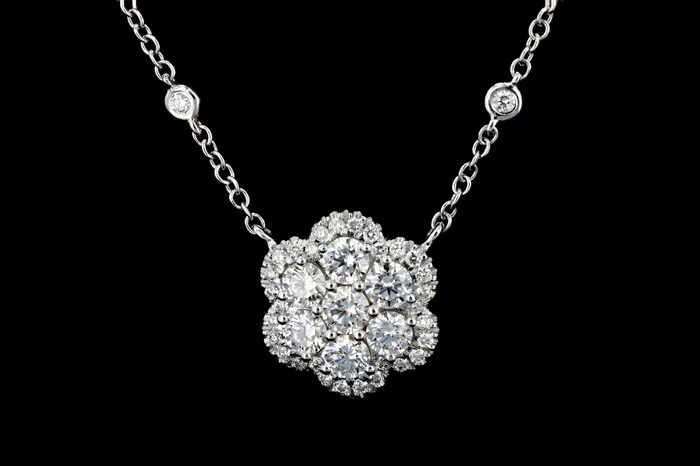Wearing jewelry, including pendants, is a common practice for many people throughout the day and into the night. Whether it’s a cherished necklace with sentimental value or a stylish pendant that completes an outfit, the decision to sleep with a pendant on raises questions about comfort, safety, and the potential impact on both the jewelry and the wearer. In this comprehensive article, we will explore the factors to consider when deciding whether to sleep with a pendant on, offering insights into best practices, potential risks, and practical tips for ensuring a comfortable night’s rest.
Understanding Pendants and Their Composition
Types of Pendants
Pendants come in various shapes, sizes, and materials, each contributing to their overall comfort and suitability for wearing during sleep. Common types of pendants include:
Metal Pendants: Crafted from materials such as gold, silver, platinum, or stainless steel, metal pendants are durable and often cherished for their aesthetic appeal and symbolic value.
Gemstone Pendants: Incorporating precious or semi-precious stones like diamonds, sapphires, or emeralds, gemstone pendants add color and sparkle. They require special care to maintain their beauty and integrity.
Symbolic or Religious Pendants: Pendants carrying symbolic or religious significance, such as crosses, infinity symbols, or cultural emblems, hold personal or spiritual meaning for the wearer.
Factors to Consider When Sleeping with a Pendant On
Comfort
One of the primary considerations when deciding to sleep with a pendant on is comfort. Some pendants, especially larger or more ornate designs, may feel uncomfortable or restrictive during sleep. Factors to consider include:
Size and Weight: Larger or heavier pendants may cause discomfort, especially if they press against the skin or shift position during sleep.
Chain Length and Material: The length and material of the chain on which the pendant hangs can affect comfort. Longer chains may tangle or become caught, while certain materials may cause irritation or allergic reactions.
Safety
Safety concerns also play a crucial role in determining whether it is safe to sleep with a pendant on. Potential safety issues include:
Choking Hazard: Pendants with small or intricate designs could pose a choking hazard, especially if they become entangled in bedding or clothing during sleep.
Skin Irritation: Certain metals or materials in pendants or chains may cause skin irritation or allergic reactions, particularly if worn for extended periods.
Damage to Pendant: Vigorous movements during sleep or accidental pulling on the chain could damage the pendant or cause it to break.
Impact on Pendant Integrity
Sleeping with a pendant on may affect its condition over time. Considerations include:
Friction and Wear: Continuous contact with bedding and movements during sleep can cause friction and wear on the pendant’s surface, potentially leading to scratches or dullness.
Tangling: Pendants with chains may become tangled or twisted during sleep, requiring untangling and potentially causing stress on the chain links.
See Also: Best Chains for Pendants: How to Choose the Right Size
Practical Tips for Sleeping with a Pendant On
Choose a Comfortable Design
Opt for a pendant design that is comfortable to wear and unlikely to cause discomfort during sleep. Lightweight and smaller pendants are generally more suitable for nighttime wear.
Adjust Chain Length
Ensure the pendant’s chain is an appropriate length to prevent tangling and discomfort. Shorter chains reduce the risk of entanglement while sleeping.
Consider Pendant Material
Select a pendant made from hypoallergenic materials if you have sensitive skin or allergies. Materials like sterling silver, titanium, or surgical stainless steel are often safer options.
Remove Before Sleep
If unsure about comfort or safety, consider removing the pendant before sleep to prevent potential discomfort, damage, or safety hazards.
Maintain Pendant Care
Regularly clean and inspect the pendant to ensure its integrity and appearance are maintained over time. Follow manufacturer guidelines for cleaning and storage.
Cultural and Personal Considerations
Cultural and Religious Symbolism
For many individuals, wearing a pendant may hold cultural or religious significance. In such cases, decisions about wearing pendants during sleep may be influenced by personal beliefs and practices.
Sentimental Value
Pendants often carry sentimental value, representing cherished memories, relationships, or milestones. Considerations of wearing pendants during sleep may involve preserving these sentimental connections.
Conclusion
The decision to sleep with a pendant on involves balancing considerations of comfort, safety, and practicality. While some individuals may find it comfortable and safe to wear certain types of pendants during sleep, others may prefer to remove them for various reasons. Understanding the factors influencing this decision—such as pendant design, materials, personal comfort preferences, and safety concerns—can help individuals make informed choices that align with their needs and lifestyle.
By considering these factors and implementing practical tips for wearing pendants during sleep, individuals can enjoy the beauty and symbolism of their jewelry while ensuring a comfortable and safe night’s rest. Ultimately, whether to sleep with a pendant on is a personal choice influenced by individual preferences, cultural practices, and the significance attached to the pendant itself.

